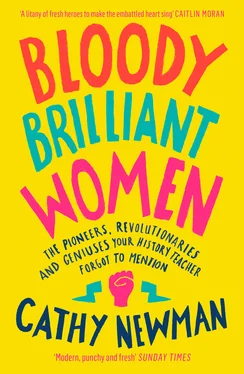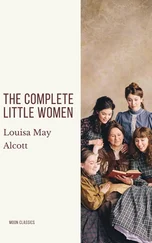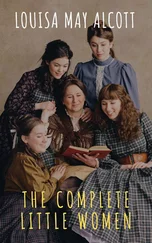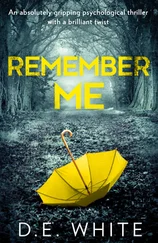Her influence on the debate about housing policy remains palpable. The historian and former MP Tristram Hunt writes that, as ministers ‘grapple with re-engineering the welfare state, it is not Keynes, Marx or Giddens who provide the inspiration, but Hill, the most versatile of late Victorian social entrepreneurs.’64
Hill died of cancer in 1912, the year a woman cut from similar cloth, Maud Pember Reeves, published Round About a Pound a Week , compiled from tracts she had produced for the Fabian Society, distilling four years’ worth of research into working-class housing. Reeves had established the Fabian Women’s Group, working alongside Beatrice Webb, who was involved in the Royal Commission considering Poor Law reform. Through this she became interested in studying the lives of working-class families in Lambeth, focusing particularly on the women who held those families together.
Despite living in well-to-do Kensington and being the wife of the New Zealand government’s Agent General, Reeves lacked Hill’s air of genteel condescension and compulsion to moralise. But her indignation was just as fierce. As she watched children playing on the streets, she was infuriated by the way the poorer ones had had their futures stolen from them. You can tell them apart, she wrote, by the way they are ‘comfortably dirty’ and have ‘the look of being small for their age’: ‘Had they been well housed, well fed, well clothed, and well tended, from birth, what kind of raw material would they have shown themselves to be?’65
What’s astonishing about Round About a Pound a Week is how many of its suggested solutions came to pass: free school dinners, free health clinics, child benefit. Not since Rowntree’s Poverty in 1901 had a book punched through so effectively, showing the middle classes and policy makers how the other half lived. It came at a time of general panic about the physical state of British men after the Boer War – concerns that would be raised again in 1914. Many were weakened by rickets and other diseases caused by poor nutrition.
Reeves and her helpers – including the anarchist Charlotte Wilson, who ran a Marxist debating society out of the Hampstead farmhouse she shared with her stockbroker husband – visited families trying to survive on a pound a week. She asked them to keep note of their outgoings and diaries detailing daily problems such as the struggle to heat their houses and keep vermin from disturbing children while they slept. Reeves was shocked by the way the families spent money they couldn’t afford on burial insurance to avoid the embarrassment of a pauper’s funeral for their children, few of whom lived to adulthood. The middle-class theory that the poor were ‘bad managers’ who squandered their money on drink was mostly not true. On the contrary, they did their best, living on bread with a scraping of dripping and sometimes potatoes. Once weaned, none of the children ever tasted milk again.
It is shocking that the families featured were by no means the worst off. A pound a week was a low wage, but not disastrously so.
-------------------------------------
Keeping body and soul together was only half the battle. There was also the life of the mind to consider.
Thanks to the 1870 Education Act, 92 per cent of the population of England and Wales were literate by 1910. But women were still not thought worth properly educating. The assumption was that they would – and would want to – stay at home raising children rather than go out to work.
Helena Swanwick, an early feminist and suffrage campaigner, wrote of her childhood in the 1880s that she ‘could not help contrasting my condition with that of my three elder brothers, all at school and able to walk about freely in the daytime, while I was not allowed out alone and had to be content with some very poor piano lessons and a few desultory German lessons with two other girls who were quite beginners.’66
Slowly, this changed. The Girls’ Public Day School Trust was founded in 1872. It was inspired by North London Collegiate, the first independent school for girls, which had been opened in 1850 by Frances Mary Buss with the goal of enabling girls to study subjects usually thought of as ‘male’, such as science and mathematics.
Buss and her friend and associate Dorothea Beale, redoubtable members of the so-called Langham Place feminists, were the target of classic Victorian everyday sexism: ‘Miss Buss and Miss Beale/Cupid’s darts do not feel./How different from us,/Miss Beale and Miss Buss’, went one rhyme. Undeterred, they pressed on, and as schools opened, so did women’s colleges like Girton, founded in Hitchin in 1869 but relocated to Cambridge in 1873. By 1879 Oxford also had three women’s colleges: Lady Margaret Hall, Somerville and St Anne’s.
Helena Swanwick was in raptures remembering her time at Girton: ‘I had a study as well as a bedroom to myself … my own fire, my own desk, my own easy-chair and reading lamp … even my own kettle – I was speechless with delight … To have a study of my own and to be told that if I chose to put “Engaged” on the door, no one would so much as knock was itself so great a privilege as to render me from sleep.’67
But Girton was expensive, costing £35 per term for board and tuition, and, even once they’d been accepted, women were at a disadvantage. Philippa Fawcett, daughter of the suffragist campaigner Millicent Garrett Fawcett (of whom more later), attended Newnham College in 1890 and came top in the Cambridge Maths Tripos exams. But she couldn’t be named ‘senior wrangler’, the term for the university’s top maths undergraduate, because women were not listed and would in any case not become full university members until 1948. Only then did they receive proper degrees rather than patronising ‘certificates of achievement’.
Still, Fawcett had an easier time of it than her aunt Elizabeth Garrett Anderson, whose vocation to train as a doctor proved farcically hard to fulfil. Medical schools were rather conservative, and distinctly queasy about women attending classes in anatomy and physiology, as if the sight of a dead man’s penis might be too much for the poor delicate creatures.
Elizabeth’s father Newson Garrett, a successful but uneducated businessman, intended great things for his daughters – all that he had not had himself. After failing to get on with their governess, Elizabeth and her sister Louisa were packed off to the Academy for the Daughters of Gentlemen in Blackheath, where they were known as the ‘bathing Garretts’ because their father had instructed that they be given a hot bath once a week – an eccentric request in 1849. Elizabeth in particular hated its finishing-school atmosphere and the fact that she was not taught maths or science there.
At twenty-one, after a grand tour of the continent, Elizabeth found herself back at the family home in Aldeburgh, tutoring her numerous siblings; comfortable, but frustrated and intellectually restless. She became interested in the burgeoning women’s movement and read about Elizabeth Blackwell, the first American (though British-born) female physician, in the Englishwoman’s Journal . Anderson heard that Blackwell was visiting Britain and contacted Emily Davies, the educational reformer who co-founded Girton College, to arrange a meeting, after which she was more certain than ever that she wanted to train to be a doctor. With Davies’ and Blackwell’s encouragement, Anderson set about filling in the gaps in her education and talking her father round. Newson Garrett initially thought the idea ‘disgusting’ but changed his mind, writing to her:
I have resolved in my own mind after deep and painful consideration not to oppose your wishes and as far as expense is concerned I will do all I can in justice to my other children to assist you in your study.
Читать дальше












